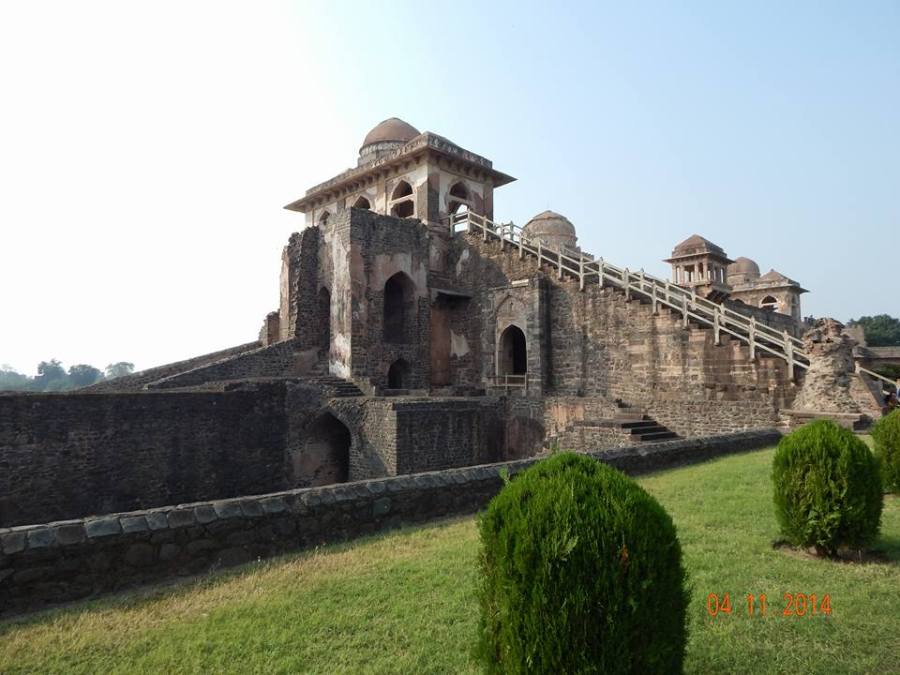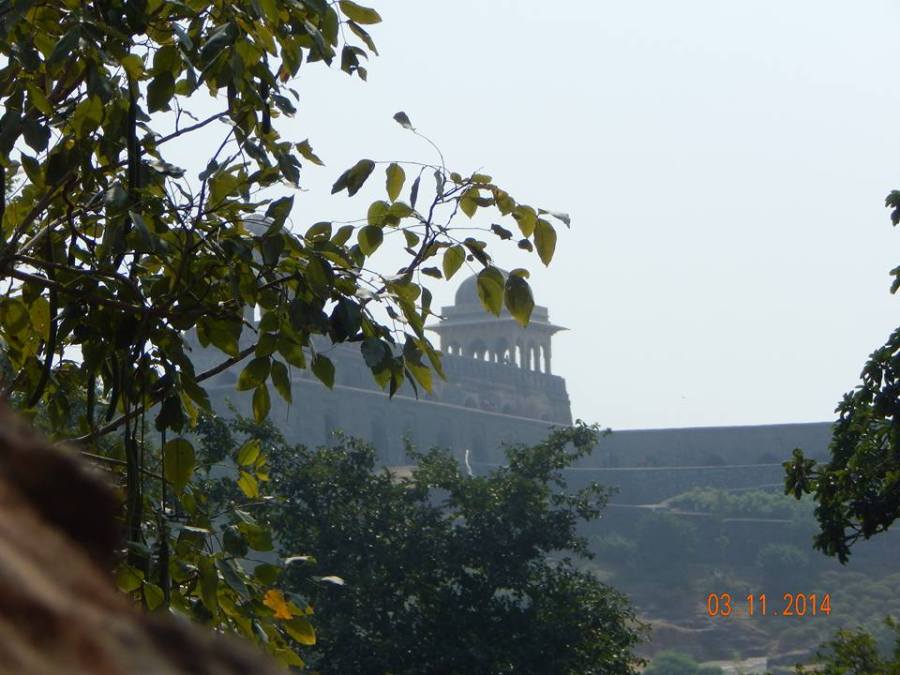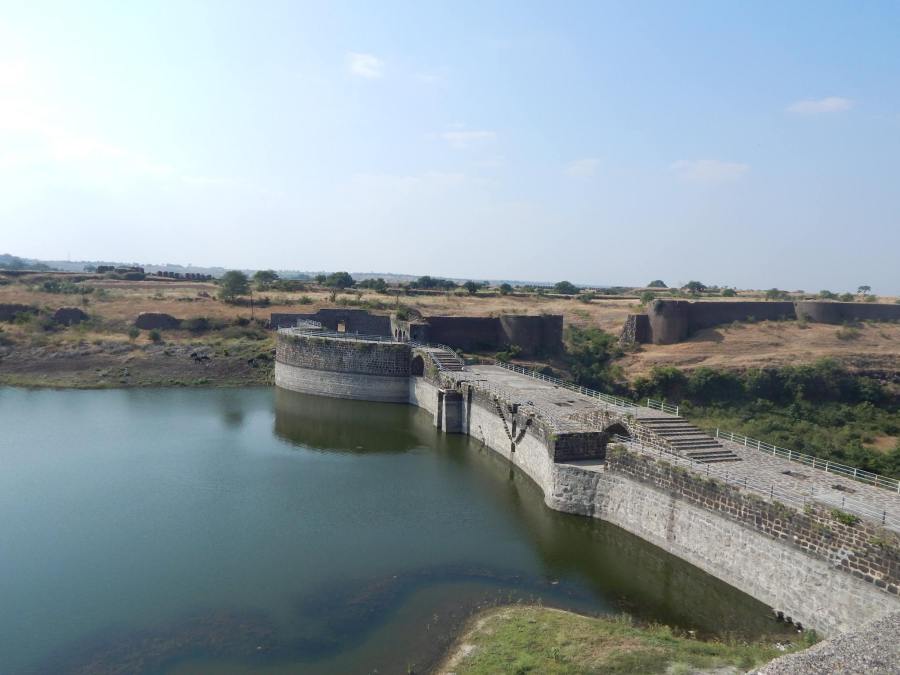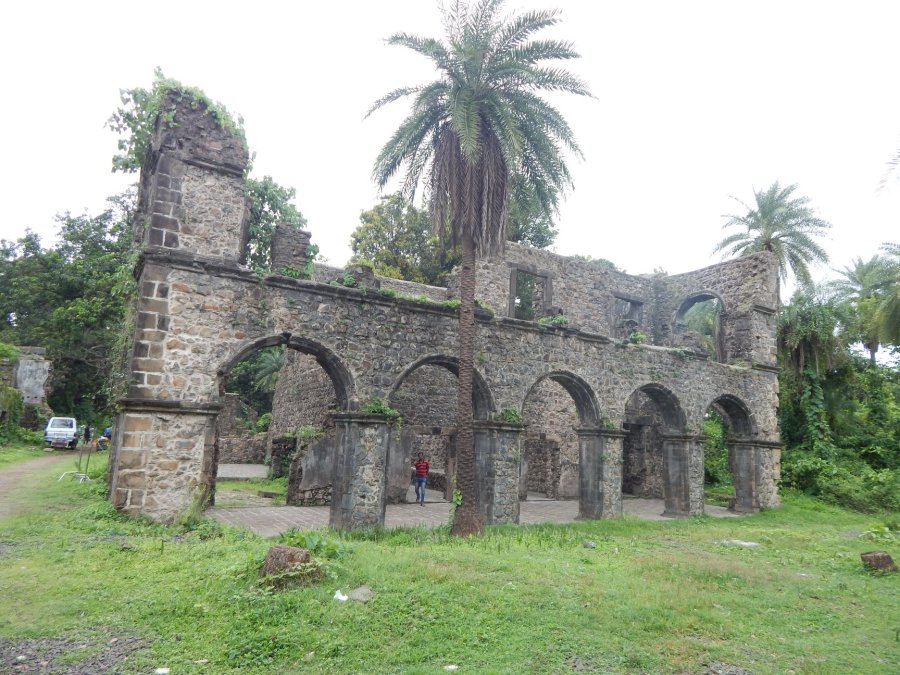
{Military system in Epic and Purana}
Every nation has its earliest history,- a history of its hard struggle with nature and hostile tribes, wonderfully mixed up with legends traditions, tales and myths. This legendry history, it may be presumed, takes in course of time a concrete shape and appears as a heroic poetry. This beginning of Indian Epic poetry may be traced to the later Vedic texts which contains legend (itihasa)*1* . There are two main epics in Indian history 1- Ramayana 2- Mahabharata. In Ramayana we can see the arrangement of military by the lord Ram he arrange different type of military for the battle with Ravana. In Mahabharata we can find easily the arrangement and the four fold army and the war ministers at the time of the war between Abhimanyu and Kaurvas Guru Dronacharya maintaind a viyuha (arranging of all army force at a special place)*2*. The Vedic host consisted of two division 1-patti (foot soldiers) and Rathin (cavalry), the epic army attained a fourfold*3*
Every nation has its earliest history,- a history of its hard struggle with nature and hostile tribes, wonderfully mixed up with legends traditions, tales and myths. This legendry history, it may be presumed, takes in course of time a concrete shape and appears as a heroic poetry. This beginning of Indian Epic poetry may be traced to the later Vedic texts which contains legend (itihasa)*1* . There are two main epics in Indian history 1- Ramayana 2- Mahabharata. In Ramayana we can see the arrangement of military by the lord Ram he arrange different type of military for the battle with Ravana. In Mahabharata we can find easily the arrangement and the four fold army and the war ministers at the time of the war between Abhimanyu and Kaurvas Guru Dronacharya maintaind a viyuha (arranging of all army force at a special place)*2*. The Vedic host consisted of two division 1-patti (foot soldiers) and Rathin (cavalry), the epic army attained a fourfold*3*
In Santi parva and in Agni purana we can see the practices of different army – “Foot soldiers were probably drawn from all shorts of people including foreigners. In the infantry this is the quantity rather than the quality that counted. The importance of of the infantry has been stressed again and again in the both Epics and puranas”*4* but of the four-fold army division of the army it is the chariot or rather the hero fighting from the chariot I.e. Rathi who was seen to play a most conspicuous and decisive part in the conduct of battles in the age of Mahabharata. Here the word of Mr. Hopkins may be quoted: “The Knight in his chariot is equal to an army. Frequently we found thousands running mounted hero. In case of national hero, of course, no bounds are set in description. Though fear of Arjuna, everybody, even the Knights ran away; the horse-riders abandoned their horse, the elephants and horses”*5*.
{Fortification}-
• In Epics and Puranas we got so many evidences of fortification. Fortification is the one of the most important work to save a state or Kingdom. Epics shows that the people were not ignorant of the rules of encampment and of the various necessities of maintaining and provisioning forts and armours with some degree of perfection these have received great attention in the later works on the Nitisastra*3*. There are 6 types of durga (forts) described in Manusmriti and in Arthashastra they are 1- GIRI DURGA 2- JAL DURGA 3-VENA DURGA 4- DHANU DURGA 5- MAHI DURGA 6- NAR DURGA. The minister of durga was called as ‘durgadhyaksha’, and the gatekeeper was called as durgapala, durgapala make his attention on the various activities outside of the fort. Fort shows the power and ability of the king, in Ramayana we can read the description of ravanas fort, hanuman search all the sources of routs and the bhanadar of ayudh and food. He also destroyed one ayudh bhandar and a garden. We can find out the ministry of the fort the durgapala was appointed in front of the gate and she maintain her attention on every movements outside of the fort*6*. Here we can say that the forts and the fortification is very important from the beginning of monarchy.



{military administration}
Military system in kautilyas arthashastra-
When we start reading about the military administration our first preference is depend on the Arthashastra, generally ascribed to chanakya (kautilya), prime minister of Chandragupta maurya. Whoever may be its author and whatever may be the date of its composition. {“Messrs Ganapati Sastri ,Shyama shastri,Thomas Hopkins, V.A. Smith, Jayaswal and R.G. Basak assign the work to the 4th century B.C. while Missrs Winternitz, Yolly, D.R. Bhandarkar, H.C.Raichaudhary and other hold that it was written in the early century of Christian era.”}. Above are the endless controversy, it is a comprehensive work on state-craft, law and military system. Arthashastra is one of most famous book of the military administration after analysing this book we can easily identify the factor of the military administration.
Military system in kautilyas arthashastra-
When we start reading about the military administration our first preference is depend on the Arthashastra, generally ascribed to chanakya (kautilya), prime minister of Chandragupta maurya. Whoever may be its author and whatever may be the date of its composition. {“Messrs Ganapati Sastri ,Shyama shastri,Thomas Hopkins, V.A. Smith, Jayaswal and R.G. Basak assign the work to the 4th century B.C. while Missrs Winternitz, Yolly, D.R. Bhandarkar, H.C.Raichaudhary and other hold that it was written in the early century of Christian era.”}. Above are the endless controversy, it is a comprehensive work on state-craft, law and military system. Arthashastra is one of most famous book of the military administration after analysing this book we can easily identify the factor of the military administration.
Military administration is divided in such parts-
KING
(WAR MINISTER) (OFFICIALS) (FOURFOLD ARMY)
(WAR MINISTER) (OFFICIALS) (FOURFOLD ARMY)
War ministers- war ministers are one of the most important chain of army administration without experienced war ministers any state cannot be safe. In different time the war ministers had wear a particular title
1- Sachiva (shukranitisara)
2- Senapati (under Mauryas and Marathas)
3- Mahabaladhikarita (under Guptas)
4- Mahaprachanddandanayaka (under Yadvas)
1- Sachiva (shukranitisara)
2- Senapati (under Mauryas and Marathas)
3- Mahabaladhikarita (under Guptas)
4- Mahaprachanddandanayaka (under Yadvas)
Very important position- The position of war minister is very important because he holds all the parts of military. The selection of the war minister is very crucial because a well war minister can save his state and he can suggest good ideas to the king.
{Selection}
A war minister had to an expert in theory and practical war. The decision making power of a war minister can make a difference between other army. He had to be an experienced proffesnol fighter, because a proffesnol fighter can understand the feelings and techniques of the enemy and they build their army according to the enemy army.
A war minister had to know technique of organization and selection of army. He had to known the viyuha rachna.
Duties- the duties of a war minister is very important he have to focus on the army and forts. He sees the forts are fully equipped or not. They organise fortification and make an attention on forts.Every dynasty had issues with the neighbouring states. So there were many violent conflicts between the states so it’s a common thing that they had to build a very big and huge army. This was the main fact of maintaining huge army by the states. According to chanakya an army can give you a great power to win all type of wars. So the duty of a war minister is notable.
Officials- officials are also a very important part of the army administration. Officials were Ranabhāndāgarādhikarana- Commissariat dept.
The main work of ranbhandagaradhikarana was to provide all functions during the war. He provides transport, labor corps, boats, spies and instructors for the best performance in war field. Every part were useful for the war.
1- Transport- This department maintains the transportation and the ambulance staff. According to kautilyas Arthashastra “a dynasty must have good roads and transportation” . we found so many evidence of routs of ancient India now these days ‘Grant trunk road of Varanasi is a very powerful evidence of the importance of road in war this road was made by ser sah suri in 17th century when he tried to attack on the north east India.’ Samrat Ashoka also made so many roads in his time. In every three months they renovate there roads and they have a special staff of roads. From good roads there are many profits in the trade and this makes the transportation easy.
2- Roads- The Arthashastra of kautilya tells us that construction of roads was one of the primary duty of king. The maurya state which was a highly
3- Labor corps- Commissariat department provides labors for work in the war and to maintain the forts. Labor department was one of the most important part in ancient India not even in past even in present this department playes a good role in the societies. labor corps maintained the roads at that time. The also works in the ambulance department. From other evidences we can found that in some critical conditions labor corps did had fighting so this department played many role.
4- Boats- The commissariat department also provides the boats in ancient India. Now the question comes out that is they had a navy army, and the answer is yes they had a naval army but they works in the rivers not in ocean. Every dynasty had a border and they have to protect that. Some dynasties had a border which ends at the middle of river so they protects that from the navy army. In ancient time water was very important and many wars had started for the water. Boats also play a good role in trading so this department is one of the important part of the military administration.*7*
5- Spies- Spies are the second eye of the king. From this statement we can understand the value of the spies. Spies were specially farmers sweepers and cleaners, no one can make an attention on them they were involved in the society and get the information from there. Spies were the first who gave the information about the activity of the enemy states.
6- Instructor- Instructor was gave instructions to the labors and corps. The instructor decides the quality of roads and other things.
A war minister had to an expert in theory and practical war. The decision making power of a war minister can make a difference between other army. He had to be an experienced proffesnol fighter, because a proffesnol fighter can understand the feelings and techniques of the enemy and they build their army according to the enemy army.
A war minister had to know technique of organization and selection of army. He had to known the viyuha rachna.
Duties- the duties of a war minister is very important he have to focus on the army and forts. He sees the forts are fully equipped or not. They organise fortification and make an attention on forts.Every dynasty had issues with the neighbouring states. So there were many violent conflicts between the states so it’s a common thing that they had to build a very big and huge army. This was the main fact of maintaining huge army by the states. According to chanakya an army can give you a great power to win all type of wars. So the duty of a war minister is notable.
Officials- officials are also a very important part of the army administration. Officials were Ranabhāndāgarādhikarana- Commissariat dept.
The main work of ranbhandagaradhikarana was to provide all functions during the war. He provides transport, labor corps, boats, spies and instructors for the best performance in war field. Every part were useful for the war.
1- Transport- This department maintains the transportation and the ambulance staff. According to kautilyas Arthashastra “a dynasty must have good roads and transportation” . we found so many evidence of routs of ancient India now these days ‘Grant trunk road of Varanasi is a very powerful evidence of the importance of road in war this road was made by ser sah suri in 17th century when he tried to attack on the north east India.’ Samrat Ashoka also made so many roads in his time. In every three months they renovate there roads and they have a special staff of roads. From good roads there are many profits in the trade and this makes the transportation easy.
2- Roads- The Arthashastra of kautilya tells us that construction of roads was one of the primary duty of king. The maurya state which was a highly
3- Labor corps- Commissariat department provides labors for work in the war and to maintain the forts. Labor department was one of the most important part in ancient India not even in past even in present this department playes a good role in the societies. labor corps maintained the roads at that time. The also works in the ambulance department. From other evidences we can found that in some critical conditions labor corps did had fighting so this department played many role.
4- Boats- The commissariat department also provides the boats in ancient India. Now the question comes out that is they had a navy army, and the answer is yes they had a naval army but they works in the rivers not in ocean. Every dynasty had a border and they have to protect that. Some dynasties had a border which ends at the middle of river so they protects that from the navy army. In ancient time water was very important and many wars had started for the water. Boats also play a good role in trading so this department is one of the important part of the military administration.*7*
5- Spies- Spies are the second eye of the king. From this statement we can understand the value of the spies. Spies were specially farmers sweepers and cleaners, no one can make an attention on them they were involved in the society and get the information from there. Spies were the first who gave the information about the activity of the enemy states.
6- Instructor- Instructor was gave instructions to the labors and corps. The instructor decides the quality of roads and other things.
The commissariat department received cooperation of merchants*8*. They protects the merchants because the merchants were a big tax payer of that time. And the other truth of saving them is they could be spies of king. The merchants are a very great source of finding the information about the neighboring states they gives straight information and activities.
Ayudhagaradhyakshha- Ayudhgaradhyaksh was the in charge of weapons and forces works under him. According to Kautilyas Arthasashtra ayudhagaradhyakshha*9* preserves weapon for battle. He had a great knowledge of preserving weapons, sword, arrow, spheres and other machines. The quality of the weapons was completely depends on the ayudhagaradhyakshha. There are some other posts were worked under him and their work was to lookout the weapons.
Superintendent of cattle Godhyaksha – in officials there were an other department. In this department they protect cattle’s and milkier, from this wage the put a little tax on the milkman. According to arthashastra kautilya says that the taxes on the cattle is very important thing because from this system milkman can maintain their focus more on cattle that’s why they maintain an administration department on this particular area. *10* Cow was most important animal of that time in kautilyas Arthashastra we can see the importance of the cow. The superintendent of cattle was known as “Godhyaksha”*11*
Fourfold army, “Chaturangi sena”-
This was the most important department of military administration. The military administration was divided in four parts.
1- Infantry- Pattyadhyaksha
2- Cavalry- Aśvapati, bhataśvapati, mahaśvapati
3- Elephant corps- hastyadhyaksha ,mahapilupati(under Guptas),
4- Chariots-corps- Rathapati
5- Aśvapati and rathapati had masters of stables under them
This department works under the war ministers. Every department had a speciality and war minister “Senapati”. Taught them how to make a sense in the battle field.
Fourfold army, “Chaturangi sena”-
This was the most important department of military administration. The military administration was divided in four parts.
1- Infantry- Pattyadhyaksha
2- Cavalry- Aśvapati, bhataśvapati, mahaśvapati
3- Elephant corps- hastyadhyaksha ,mahapilupati(under Guptas),
4- Chariots-corps- Rathapati
5- Aśvapati and rathapati had masters of stables under them
This department works under the war ministers. Every department had a speciality and war minister “Senapati”. Taught them how to make a sense in the battle field.
1- Infantry “pattyadhyaksha” – As the name we can understand the meaning of infantry “footarmy”. The quantity of the foot army were more higher than others. The selection of the foot army was not so important at those time. They were selected on there physical appearance.
References
1-‘Purana’, itivrtta (history)akhyayika (tales) udaharana, (illustrated stories), dharmasastra and Arthasastra are (known by the name) itihasa kaut. S. sastry’s tr. p. 10
2-Mahabharta
3-The game of chess which was played in india from the earliest times to the days of Alberuni probably according to Dr. Smith , its origin in the chaturangabala.
4- santi parva 100.24.
5- agni purana 288.7.
6- ramayana lanka kanda and sunder kanda.
7- The superintendent of cattle should know about (cattle) looked after in return for a wage, tended with a tax and a fixed return, become useless and cast of, entered (in the state in the herds ) by payment of share, the total number of (cattle in) herds (cattle) that are lost or have perished, and the total produce milk and ghee. Arhashastra chapter no. 29 . 1
8- One person should look after one hundred animals containing an equal number of aged cows , cows with young, cows with calf for the first. Arhthashastra chapter no.29 . 4
2-Mahabharta
3-The game of chess which was played in india from the earliest times to the days of Alberuni probably according to Dr. Smith , its origin in the chaturangabala.
4- santi parva 100.24.
5- agni purana 288.7.
6- ramayana lanka kanda and sunder kanda.
7- The superintendent of cattle should know about (cattle) looked after in return for a wage, tended with a tax and a fixed return, become useless and cast of, entered (in the state in the herds ) by payment of share, the total number of (cattle in) herds (cattle) that are lost or have perished, and the total produce milk and ghee. Arhashastra chapter no. 29 . 1
8- One person should look after one hundred animals containing an equal number of aged cows , cows with young, cows with calf for the first. Arhthashastra chapter no.29 . 4
9- Navadhyakshah samudrasanyanandimukhtarpracharan devasarovisaronditransch sthaniyadishvavekcheta., village on there shores and banks shall pay a fixed (tax)., fishermen shall pay one sixth (of their catch)as rent for the boats., Traders shall pay a part (of the goods) as duty according as it may be current at the ports, those travelling by the king’s ship (shall pay) hire for the voyage. The controller of shipping shall observe the regulations in a port town as fixed by the commissioner of ports.(arthashastra chapter-28, 1,2,3,4,7,)
10- Traders shall pay a part (of goods) as duty according as it may be current at the ports, those travelling by the king’s ship (shall pay) hire for voyage.
11- Ayudhgaradhyakshhah sangramikam daugarkarmikam parpurabhighatikan cha yantramayudhamavaranamupakaranam cha tajjatkarushilpibhiha kritakarmapramanakaalvetnfalnishpttibhiha karyet, svabhumishushva sthapyeta.
10- Traders shall pay a part (of goods) as duty according as it may be current at the ports, those travelling by the king’s ship (shall pay) hire for voyage.
11- Ayudhgaradhyakshhah sangramikam daugarkarmikam parpurabhighatikan cha yantramayudhamavaranamupakaranam cha tajjatkarushilpibhiha kritakarmapramanakaalvetnfalnishpttibhiha karyet, svabhumishushva sthapyeta.





